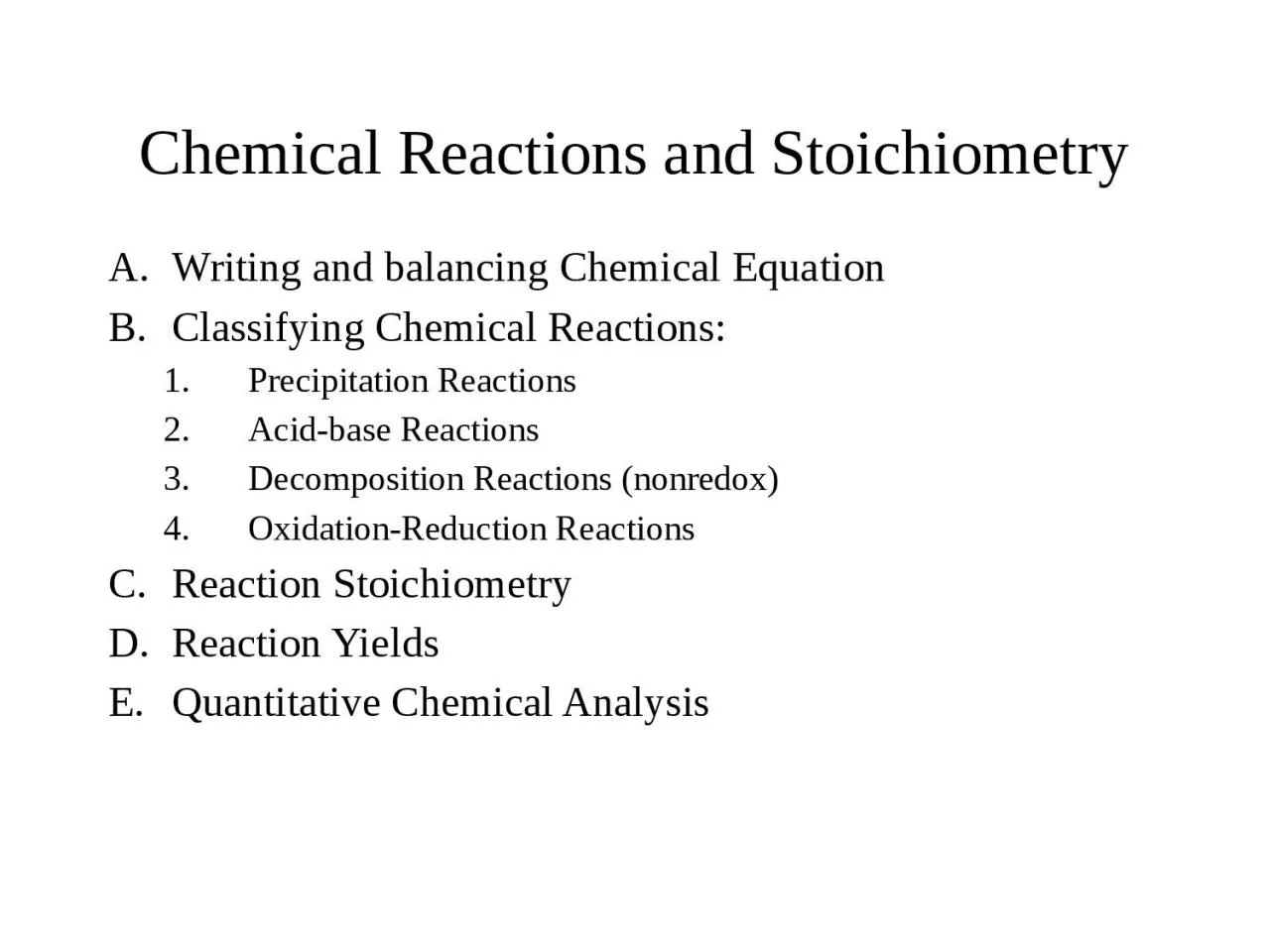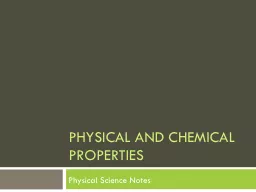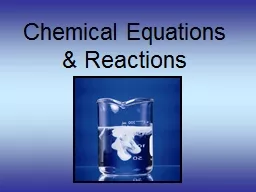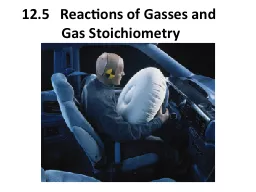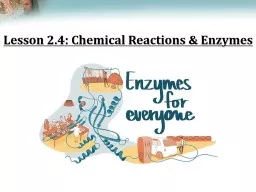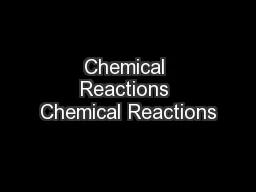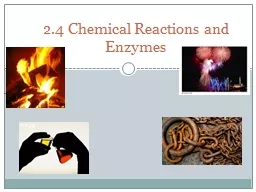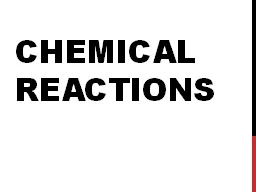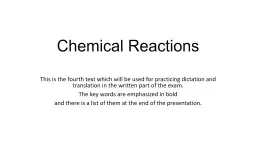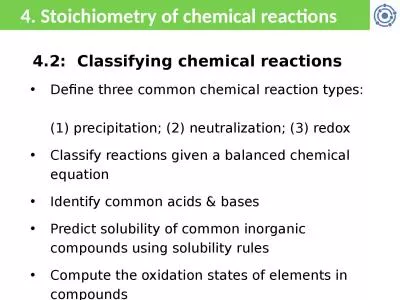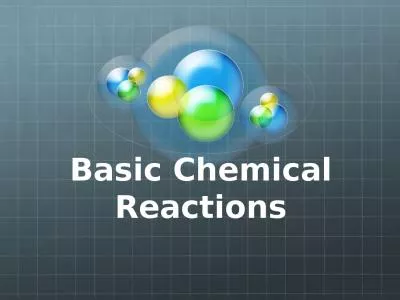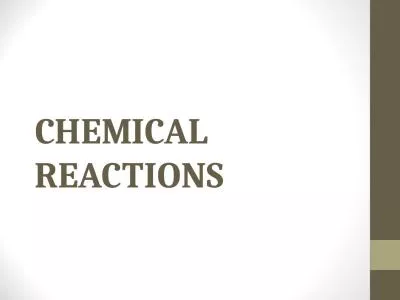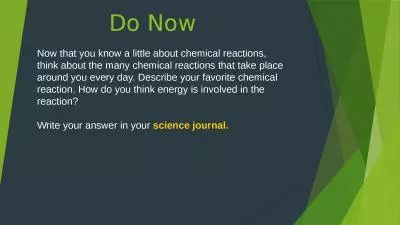PPT-Chemical Reactions and Stoichiometry
Author : jalin | Published Date : 2024-01-03
Writing and balancing Chemical Equation Classifying Chemical Reactions Precipitation Reactions Acidbase Reactions Decomposition Reactions nonredox OxidationReduction
Presentation Embed Code
Download Presentation
Download Presentation The PPT/PDF document "Chemical Reactions and Stoichiometry" is the property of its rightful owner. Permission is granted to download and print the materials on this website for personal, non-commercial use only, and to display it on your personal computer provided you do not modify the materials and that you retain all copyright notices contained in the materials. By downloading content from our website, you accept the terms of this agreement.
Chemical Reactions and Stoichiometry: Transcript
Writing and balancing Chemical Equation Classifying Chemical Reactions Precipitation Reactions Acidbase Reactions Decomposition Reactions nonredox OxidationReduction Reactions Reaction Stoichiometry. DEFINITIONS AND TYPES. Revision:. DO NOT WRITE- FOR YOUR INFO ONLY. We have looked at the period table, what atoms are, elements and compounds. You have learnt that atoms can join to make compounds or molecules and that we can mix compounds to make new compounds…..these are chemical reactions. Physical Science Notes. Physical Properties. PHYSICAL PROPERTY . - A feature or characteristic of matter which can be observed without changing the identity of the matter . Examples. :. . . Color. Chemical Equations. This equation means:. 4 Al(. s. ) + 3 O. 2. (. g. ) 2 Al. 2. O. 3. (. s. ). 4 Al atoms + 3 O. 2. molecules yield 2 molecules of Al. 2. O. 3. 4 Al . moles. Gas Stoichiometry. Recall:. The law . of combining volumes . W. hen . gases react, the volumes of the reactants and products react in whole. -number . ratios if the temperatures and pressures are constant. . Guiding Questions. How are dosages determined? . How are toxins measured and controlled?. . Which is better: eating beans and rice at separate meals . or together?. . Table of Contents. ‘Stoichiometry’. Chemical Reactions. :. A . chemical reaction . is a process that changes one set of chemicals into another by rearranging chemical bonds. The elements you start with are . reactants. The elements you end with are . 10.1 . Reactions and . Equations. Evidence of Chemical Reactions. .. . The process of which the atoms of one or more substances are rearranged to form different substances is called a . Chemical Reaction. Chemical Reactions. A . chemical reaction . is a process that changes, or transforms, one set of chemicals into another by changing the chemical bonds that join atoms in compounds. . @Mass and energy are conserved during chemical transformations.@. Changes or transforms chemicals into . other. chemicals. Ex: Iron + Oxygen . . Iron Oxide (rust). Physical Science Review. What is the product?. What are the reactants?. Chemical formula. . shows the kind and proportion of atoms of each element that occurs in a particular compound. The key words are emphasized in bold . and there is a list of them at the end of the presentation. . Chemical Reactions. When a chemical reaction occurs, new substances (called . products. ) form from the substances taking part in the reaction (called . 4.2: Classifying chemical reactions. Define three common chemical reaction types: . (1) precipitation; (2) neutralization; (3) redox. Classify reactions given a balanced chemical equation. Identify common acids & bases. What is a Chemical Reaction?. A Chemical reaction occurs when ever a chemical bond is formed, broken or rearranged.. A chemical reaction will always create a new substance.. Energy and Chemical Reactions. All. chemical reactions either release or absorb energy. . The energy can take many forms: . HEAT. , . LIGHT. , . SOUND. , and . ELECTRICITY. . Chemical . bonds. are the source of this energy. . Write your answer in your. . science journal.. Quiz. 1. How . many molecules of oxygen gas in the reactant (O. 2. ) are needed to balance this equation?. CH. 4. + O. 2. → 2CO. 2. + 4H. 2. O.
Download Document
Here is the link to download the presentation.
"Chemical Reactions and Stoichiometry"The content belongs to its owner. You may download and print it for personal use, without modification, and keep all copyright notices. By downloading, you agree to these terms.
Related Documents

